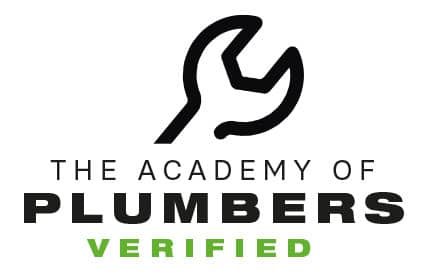What Is Net Metering?
Net metering allows electricity consumers to feed electricity back to the grid. Naturally, this is possible only if you, as a consumer, are also producing electricity.
Many residential consumers employ solar panels or other forms of electricity generation. Net metering allows for such customers to feed electrical power they are not using back into the grid.
Net metering is, essentially, a billing arrangement between you, the consumer, and the energy provider. Through this billing arrangement, the consumers are credited for the complete retail value of the electrical power they feed to the grid. In net metering, the focus is on using the self-produced electricity first, and any surplus is fed back or sold to the utilities.
Net metering is not by any means a completely new or modern service. In fact, it has been available to customers in Massachusetts since the 1980s. However, recent regulations and a boom in solar panel industry have resulted in a net metering hype.
Net Metering Requirements
Net metering has some general pre-requisites:
- Consumer generates electricity using any of the qualified generating technologies
- Consumer is connected to the grid via a smart meter or net meter
- Consumer meets feed-in standards
If you fulfill the above three requirements, you may be able to request net-metering from your utility company. However, there may be additional requirements imposed by states or your utility service.
For example, in Massachusetts, to be eligible you may install any type of generating facility smaller than 60 kilowatts. If you choose wind or solar generation facility, this limit is extended up to 2 megawatts. Your state or utility company may even specify where you can buy electrical equipment for net metering.
Smart meter used at Washington Navy Yard.
How Net Metering Works
If you have a solar system installed on your premises, you are continuously generating electricity during the day. There are often cases when the solar system produces more energy than is currently required at the property.
At such times, when the production is an excess of the demand, this surplus of energy is automatically fed to the utility grid through the smart meter. The smart meter than runs backward to credit the consumer account.
Of course, there are times when the user demands more energy than is produced. At such times, the electricity is taken from the utility grid, and the meter spins forward. Through smart meters, all throughout the day (and night), whenever there is excess electricity, it is fed into the grid, and whenever there is more demand, the consumer takes from the grid.
This switching is automatic and instantaneous, to the extent that you will never notice it. There are no interruptions in power flow.
How net metering works.
Why is Net Metering Important?
Net metering is the future! In the past, there were only a few power generation facilities.
They were huge and in the case of an accident, could cause disaster if the energy supply was brought to a halt. Then came the era of small-scale power generation, where many smaller generation facilities were built.
The future is a smart grid of distributed generation. This means that every house that has a solar panel can act as a generation facility for the whole grid, for the whole country!
Unlike previous approaches, net metering allows you to feed electricity whenever it is generated. This is very important for wind and solar power generation, since these sources fluctuate and are unreliable.
Prices for solar panels have fallen dramatically, resulting in an increase in installation. Hence, to prepare for the ever-increasing power demand, net metering is our way to a more stable and reliable system.
Benefits of Net Metering
There are several advantages, particularly for the consumer. We list the top five:
- Consumers can feed continuously. Small power generation is typically unreliable and varies. Net metering avoids the use of battery storage before feeding.
- Since the meter simply spins the meter backward, hence the consumer earns at the same rate at which he/she consumes power. This means the consumer can get a quick and predictable return on investment. Consumers can even zero-out their bills, and some may even go further to earn a net surplus through net metering.
- Contrary to the feed-in tariff (FIT) approach, net metering uses a single, bi-directional meter and can measure the current flowing in two directions. This saves cost on electrical parts required to feed power to the grid.
- Net metering solves the issue of peak load during the day. During office hours, homes typically do not use electricity, but a huge load comes from offices. Solar panels installed at homes can generate the electricity required for these peak hours and reduce stress on the electricity grid.
- A consumer who feeds electricity to the grid becomes a conscientious user, as well. Studies show that net metering users also become more energy conscious. They not only produce electricity for others, but also avoid wasting it.
Which States Allow Net Metering?
Almost all U.S. states implement one form or another of net metering. Therefore, if you are a residential or commercial customer and are also generating electricity, you can use net metering to generate significant income from the excess electricity you produce.
Net metering policies per state vary slightly. Your state may have specific requirements for distributed generation in terms of the capacity limits, eligible technology, credit retention and REC ownership.
Georgia, Hawaii, Nevada and Mississippi use compensation rules that differ from others. For example, Georgia credits excess power generation at a predetermined rate, the solar-avoided cost.
Similarly, there are differences in terminology, capacity limits and other relevant requirements. Keep up with your state’s net metering policy to make the best of your excess generated power.
Conclusion
Net metering is a billing mechanism where consumers with generation facilities, typically solar, can feed electricity into the grid and are credited at the same rate at which they consume from the utility. Through net metering, you can get the best and most out of your solar system.
On average, 20-40% of a solar energy system’s output is fed into the grid for net-metered users. This energy meets nearby demands, while you sit back and watch the meter spin backward in your favor. Net metering gives customers control over their bills while moving the power grid into a future of distributed generation, renewable energy and reliable supply and demand.
Guest Blog Post: http://www.relectric.com/
Image Links:
The second figure is drawn in PowerPoint using simple shapes. Image for home and electrical grid are taken from following sources:
https://commons.wikimedia.org/wiki/File:Gables.jpg
https://commons.wikimedia.org/wiki/File:Electricity_grid_simple-_North_America.svg




